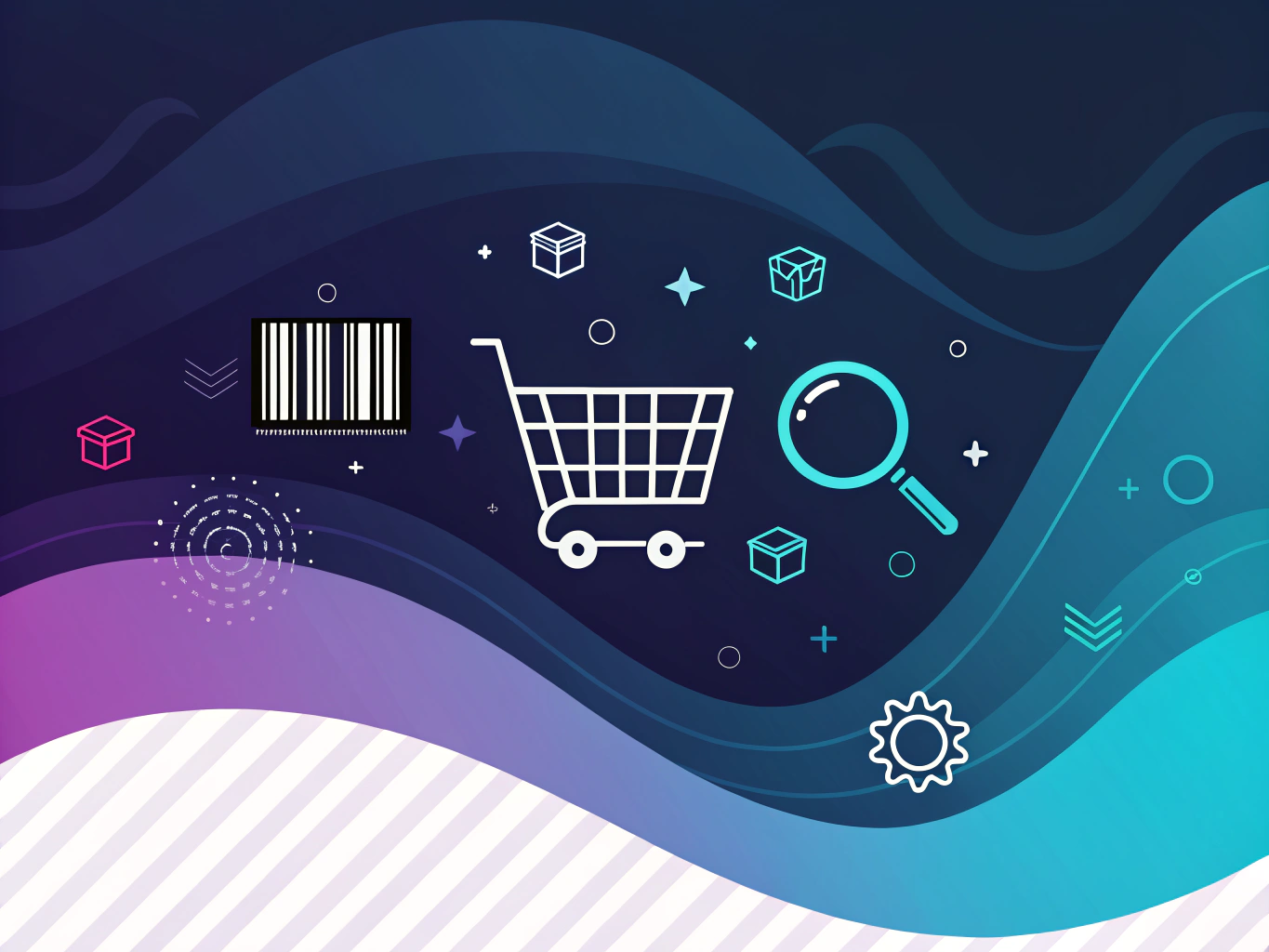Ever wondered why Amazon seems to have this almost obsessive need to slap a unique code on everything they sell? It’s not just some corporate fetish for organization (though, let’s be honest, Amazon does love its systems). These mysterious strings of letters and numbers – ASINs – are actually the invisible threads holding together the world’s largest digital marketplace.

Think of ASINs as Amazon’s DNA sequence for products. Just like how your genetic code makes you uniquely you, an ASIN (Amazon Standard Identification Number) is the unique identifier that distinguishes one product from the literally hundreds of millions of others in Amazon’s vast catalog. It’s fascinating how something so seemingly simple – a 10-character alphanumeric code – can be so crucial to the entire ecosystem of online retail.
What is an ASIN? Breaking Down Amazon’s Product DNA
Let’s get the technical stuff out of the way first: an ASIN stands for Amazon Standard Identification Number. It’s a unique 10-character ID that Amazon assigns to every single product in its marketplace. But that’s like saying DNA is just a bunch of chemicals – it doesn’t tell the whole story.
Back in the early days of Amazon, when they were just selling books, they needed a way to organize their inventory that went beyond traditional ISBN numbers. As they expanded beyond books (way beyond books), this system evolved into what we now know as ASINs. It’s kind of like how life evolved from single-cell organisms to complex creatures – except this evolution happened at Amazon speed.
ASIN vs. The World: Understanding Product ID Systems
Here’s where it gets interesting. While ASINs are Amazon’s native language, they’re not the only product identification system out there. Think of it like this: UPCs (Universal Product Codes) are like English – widely used and accepted globally. EANs (European Article Numbers) are like French – predominantly used in Europe but recognized internationally. ISBNs (International Standard Book Numbers) are like Latin – specifically for books and their derivatives.
ASINs are Amazon’s attempt to create a universal translator for all these different “languages.” When you list a product on Amazon, it might already have a UPC or EAN, but Amazon needs to speak its own language – hence, the ASIN. It’s their way of saying, “Welcome to our world, now here’s your Amazon citizenship card.”
The Anatomy of an ASIN: More Than Just Random Characters

Structure and Format: Cracking the Code
Every ASIN is a 10-character string that can include both letters and numbers. It’s like a product’s fingerprint – unique and telling. For books, it often starts with ‘B’ followed by nine other characters. For everything else, it could be any combination of numbers and uppercase letters.
But here’s something most people don’t realize: while ASINs might look random, they’re anything but. The sequence often contains patterns that can tell you about the product’s category, when it was added to Amazon’s catalog, and sometimes even its relationship to other products. It’s like a secret code hiding in plain sight.
Types of ASINs: The Family Tree
Just like in any family, there are different types of ASINs. You’ve got your Parent ASINs – think of them as the family heads. These represent the main product listing when there are multiple variations (like different colors or sizes). Then there are Child ASINs – the individual variations that all connect back to that parent listing.
And just to make things more interesting, you’ve got Global ASINs versus Marketplace-specific ASINs. A Global ASIN is like a world passport – it’s the same across all Amazon marketplaces. But sometimes, due to regional differences or requirements, a product might need different ASINs for different marketplaces. It’s Amazon’s way of managing the complexity of global commerce while maintaining order in their system.
ASIN’s Critical Role in Amazon’s Ecosystem
Catalog Management: The Digital Library of Alexandria
Remember the ancient Library of Alexandria? Amazon’s catalog is like that, but digital and actually surviving. ASINs are the Dewey Decimal System of this massive digital library. They help Amazon organize hundreds of millions of products across countless categories, making sure everything is findable, trackable, and manageable.
Without ASINs, Amazon’s catalog would be like a library where books are randomly thrown onto shelves – chaos. Instead, these unique identifiers allow for precise inventory tracking, accurate product matching, and efficient database management. It’s what enables Amazon to tell you exactly how many units of a specific color variant of a product are left in stock in a warehouse three states away.
Search and Discovery: The Digital Treasure Map
Here’s where ASINs really shine – they’re crucial to Amazon’s search algorithm. When you type “blue wireless mouse” into Amazon’s search bar, the algorithm uses ASINs to match your query with relevant products, considering factors like sales history, reviews, and listing quality – all tied to specific ASINs.
Think of ASINs as coordinates on a treasure map. They help both Amazon’s system and customers navigate through the vast ocean of products to find exactly what they’re looking for. It’s why you can find that specific phone case model for your three-year-old phone in exactly the right shade of midnight blue, among millions of other phone cases.
ASIN Assignment and Management: The Art and Science

Getting an ASIN isn’t like getting a driver’s license – you can’t just show up at the DMV and wait in line. The process is more nuanced, and understanding it is crucial for anyone serious about selling on Amazon.
Automatic ASIN Generation: The Birth of a Product Identity
When you’re figuring out how can I get an asin number, you’re essentially asking Amazon to create a digital identity for your product. The process is automated, but it’s not as simple as pushing a button. Amazon needs specific information – think of it as filling out a birth certificate for your product.
The UPC vs ASIN debate often comes up here. While they serve similar purposes, they’re different beasts entirely. UPC is like your passport number – globally recognized. An ASIN is more like your employee ID at Amazon – supremely important within the ecosystem, but not necessarily relevant outside it.
Manual ASIN Lookup: The Detective Work
Sometimes you need to play detective and track down existing ASINs. This is where tools and resources come in handy. Can I sell on Amazon without ASIN? Technically no – it’s like trying to exist without a social security number in the modern world. Every product needs one, whether you create it or use an existing one.
The purpose of ASIN goes beyond simple identification. It’s about creating a standardized way to track, manage, and optimize product listings. Think of it as the DNA that carries all the crucial information about your product through Amazon’s vast marketplace ecosystem.
ASIN Applications for Sellers: Where the Rubber Meets the Road

Let’s talk about where the rubber meets the road – how ASINs actually matter for your business. Because honestly? Understanding ASINs is like learning to speak Amazon’s language. And just like any language, once you get it, a whole new world opens up.
Inventory Management Made Simpler
Remember that time you tried organizing your closet without labels? Yeah, that’s what running an Amazon business without proper ASIN management feels like. With proper ASIN tracking, you can monitor stock levels across warehouses, predict when you’ll need to reorder, and avoid the dreaded “out of stock” status that makes customers run to your competitors.
Here’s where it gets interesting: ASINs are your secret weapon for multi-channel selling. By mapping your ASINs to SKUs and UPCs, you create a unified system that works across platforms, including marketplaces like Walmart WFS. It’s like having a universal translator for your product catalog.
Marketing and Analytics: The ASIN Advantage
Ever wonder why some Amazon listings seem to magically appear at the top of search results? Part of that magic is understanding how ASINs influence Amazon’s A9 algorithm and how factors like Amazon product reviews play a crucial role in rankings. When you know your ASIN meaning and how to leverage it, you can:
- Track competitor pricing and positioning for identical products
- Monitor your BSR (Best Sellers Rank) across categories
- Optimize your PPC campaigns with precise targeting
- Identify trending products in your niche
Advanced ASIN Strategies That Actually Work
Look, I’ve seen too many sellers treat ASINs like just another box to check. But here’s the thing – in the same way AI isn’t just a fancy calculator, ASINs aren’t just product codes. They’re the DNA of your Amazon business.
Cross-Border Selling Without The Headaches
Going international? Here’s something most guides won’t tell you: ASINs can vary by marketplace. That bestseller ASIN you’ve memorized for the US store? It might be completely different in Germany or on the Amazon Japan Store, where regional catalog differences come into play. This is where having a solid ASIN management strategy becomes crucial.
Pro tip: Create a master spreadsheet mapping your global ASINs. Trust me, your future self will thank you when you’re expanding to new markets at 3 AM and need to reference your product catalog.
Product Variation Management That Makes Sense
Parent-child relationships in ASINs are like running a digital family business. The parent ASIN is the umbrella that connects all variations, while child ASINs represent specific versions of your product. Get this structure right, and you’ll make it easier for customers to find exactly what they want.
Common ASIN Challenges (And How to Crush Them)

After working with hundreds of brands, I’ve seen pretty much every ASIN disaster imaginable. Here are the big ones you need to watch out for:
Technical Issues That’ll Keep You Up at Night
- Duplicate ASINs (yes, they happen, and they’re as fun as they sound)
- ASIN merging gone wrong
- Data inconsistencies across marketplaces
The solution? Regular ASIN audits. Think of it like spring cleaning for your Amazon catalog – nobody loves doing it, but it prevents bigger headaches down the road.
Compliance and Best Practices That Actually Matter
Amazon’s ASIN policies are like the rules of the road – ignore them at your own risk. Key things to remember:
- Never create duplicate listings for the same product
- Don’t try to game the system with multiple ASINs
- Keep your product information accurate and up-to-date
The Future of ASINs (It’s Not What You Think)
As someone deep in the AI and ecommerce space, I see some fascinating developments on the horizon. ASINs aren’t going anywhere, but how we use them is evolving rapidly.
The AI Revolution Meets Product Identification
We’re already seeing AI tools that can automatically categorize products and suggest optimal ASIN structures. At ProductScope AI, we’re working on features that’ll make ASIN management as simple as having a conversation with your computer. The future isn’t about replacing ASINs – it’s about making them work smarter for you.
Cross-Platform Integration: The Next Frontier
The lines between different marketplaces are blurring. We’re moving toward a world where product identification systems will need to work seamlessly across platforms. Think of it as the Internet Protocol (IP) of ecommerce – a universal standard that connects everything.
Final Thoughts: Making ASINs Work for You
ASINs might seem like just another technical requirement in the vast Amazon ecosystem. But they’re really the foundation of your success on the platform. Think of them as your product’s digital fingerprint – unique, essential, and telling a story about who you are in the marketplace.
Whether you’re just starting out or running a million-dollar operation, getting your ASIN strategy right is crucial. It’s not about perfection – it’s about progress. Start with the basics, keep learning, and remember: every successful Amazon seller was once in your shoes, trying to figure out what ASIN stands for.
The ecommerce landscape is constantly evolving, but understanding and mastering ASINs will always give you an edge. So take what you’ve learned here, apply it to your business, and watch your Amazon presence grow. After all, in the world of ecommerce, speaking Amazon’s language fluently is half the battle won.
Explore More Resources
If you’re interested in learning more about optimizing your Amazon strategy, be sure to check out our resources on Amazon Product Photography and photo editing techniques. Dive into the AI tools that are reshaping ecommerce and explore how to join the Amazon Vine Program. For quick answers, visit our FAQ page and discover more insights about selling on platforms like TikTok Shop and Facebook Marketplace.
👉👉 Create Photos, Videos & Optimized Content in minutes 👈👈
Related Articles:
- 2024 Amazon Backend Keywords: Latest Updates Guide
- ProductScope AI: AI Photo Editor, AI Videos & AI Agents for Brands
- Amazon Vine Program: Join Today & Review Free Products
Frequently Asked Questions
What is UPC vs ASIN?
UPC (Universal Product Code) and ASIN (Amazon Standard Identification Number) are both used to identify products, but in different contexts. UPC is a 12-digit barcode widely used in retail to track trade items, while ASIN is a unique identifier for products listed on Amazon, consisting of 10 alphanumeric characters.
Where to find item number on Amazon?
The item number, or ASIN, on Amazon can typically be found in the product details section of a product listing page. It’s also often listed in the URL of the product page and sometimes in the product’s title or description.
How can I get an ASIN number?
An ASIN number is automatically assigned to your product when you list it on Amazon for the first time. If you are adding a product that already exists on Amazon, you can find its ASIN in the product details or by searching for the product and checking its listing.
Can I sell on Amazon without ASIN?
No, an ASIN is required to list and sell products on Amazon. Each product must have a unique ASIN, which helps Amazon organize and track products in their catalog. If you’re listing a new product, Amazon will generate an ASIN for it.
What is the purpose of ASIN?
The purpose of an ASIN is to uniquely identify products within the Amazon marketplace, allowing for precise tracking, cataloging, and search functionality. It helps both sellers and buyers find and manage products efficiently, ensuring that each product is distinct and easily searchable.
About the Author
Vijay Jacob is the founder and chief contributing writer for ProductScope AI focused on storytelling in AI and tech. You can follow him on X and LinkedIn, and ProductScope AI on X and on LinkedIn.
We’re also building a powerful AI Studio for Brands & Creators to sell smarter and faster with AI. With PS Studio you can generate AI Images, AI Videos, Chat and Automate repeat writing with AI Agents that can produce content in your voice and tone all in one place. If you sell on Amazon you can even optimize your Amazon Product Listings or get unique customer insights with PS Optimize.
🎁 Limited time Bonus: I put together an exclusive welcome gift called the “Formula,” which includes all of my free checklists (from SEO to Image Design to content creation at scale), including the top AI agents, and ways to scale your brand & content strategy today. Sign up free to get 200 PS Studio credits on us, and as a bonus, you will receive the “formula” via email as a thank you for your time.
